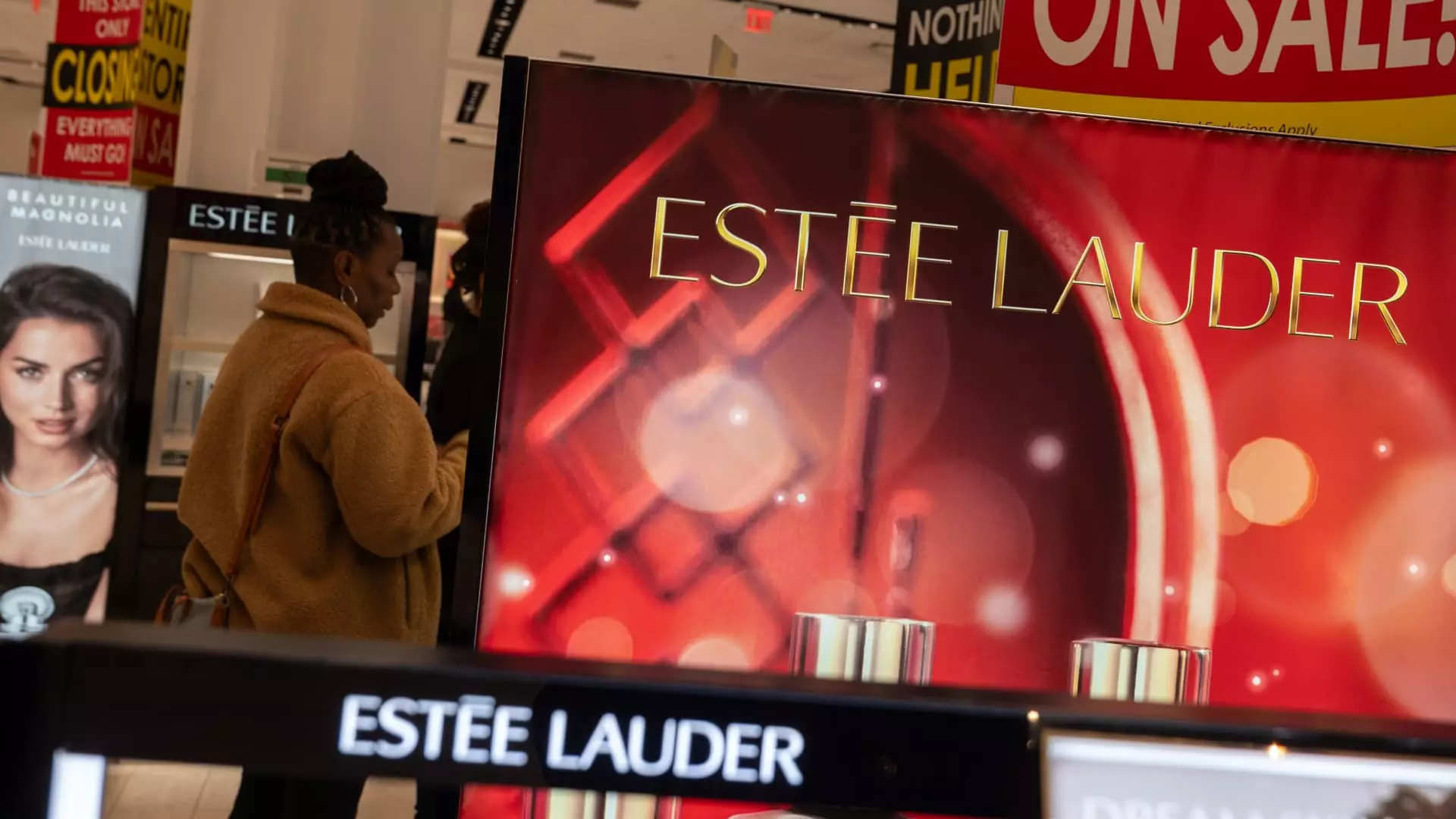The beauty industry has recently found itself in a precarious position as several prominent companies, including E.l.f. Beauty and Estée Lauder, faced significant stock declines. The past week marked a turbulent chapter for the cosmetics sector, with E.l.f.’s shares plummeting nearly 29%, reflecting its most substantial weekly drop since the summer of 2018. While the brand posted revenue figures that exceeded expectations in its third fiscal quarter, it fell short of analyst projections on adjusted earnings per share. This disparity prompted the company to lower its sales forecast, signaling a potential uphill battle ahead.
The decline in E.l.f.’s performance can be attributed to a marked decrease in consumer interest, as highlighted by CEO Tarang Amin in his interview. He emphasized that January witnessed a 5% downturn across the cosmetics sector, largely due to the consequences of aggressive holiday discounting and a reduced online engagement with beauty products. Such trends indicate not only the fluctuating demands of consumers but also raise questions about how well-equiped beauty brands are to adapt to fast-changing market conditions.
Similarly, Estée Lauder saw its shares fall by 22%, which highlights the broader implications for the industry when one of its giants stumbles. The company announced extensive job cuts, projecting layoffs of 5,800 to 7,000 employees due to diminishing travel retail sales in Asia. Despite posting a revenue surpassing expectations, the sapped workforce and decreasing demand in key markets left investors spooked and led to a steep decline in stock value. CEO Stéphane de La Faverie expressed concern over the company’s inability to seize growth opportunities, an acknowledgment of the shifting landscape within which beauty companies operate today.
The repercussions have spread beyond just these two brands. Ulta Beauty and Coty also witnessed significant stock declines, with Ulta experiencing its worst week since April as shares decreased by 9%, while Coty saw nearly an 8% dip—its most significant drop since October. Furthermore, Amin pointed out a decline in sales performance at Ulta, indicating that consumer demand within retail environments is wavering, further challenging the stability of beauty brands reliant on these distribution channels.
Adding to the uncertainty are geopolitical factors, such as tariffs imposed on U.S. imports by China in response to tariffs initiated by the previous administration. With approximately 80% of E.l.f.’s products manufactured in China, there is justifiable concern about the price increases that could ensue as a result of these tariffs. While Amin expressed relief at the relatively lower tariffs imposed, the shadow of potential future tariffs looms large, threatening to impact profit margins and consumer prices.
The volatility in beauty stocks this week serves as a stark reminder of the fragility of consumer-centric sectors. Companies must remain agile and responsive to changing consumer preferences while navigating external economic pressures. The beauty industry’s future hinges on its ability to innovate, adapt to market dynamics, and effectively engage with consumers in ways that transcend traditional retail approaches. As the landscape continues to shift, stakeholders in the industry must stay vigilant, prepared to turn challenges into opportunities for growth and revitalization.


Leave a Reply